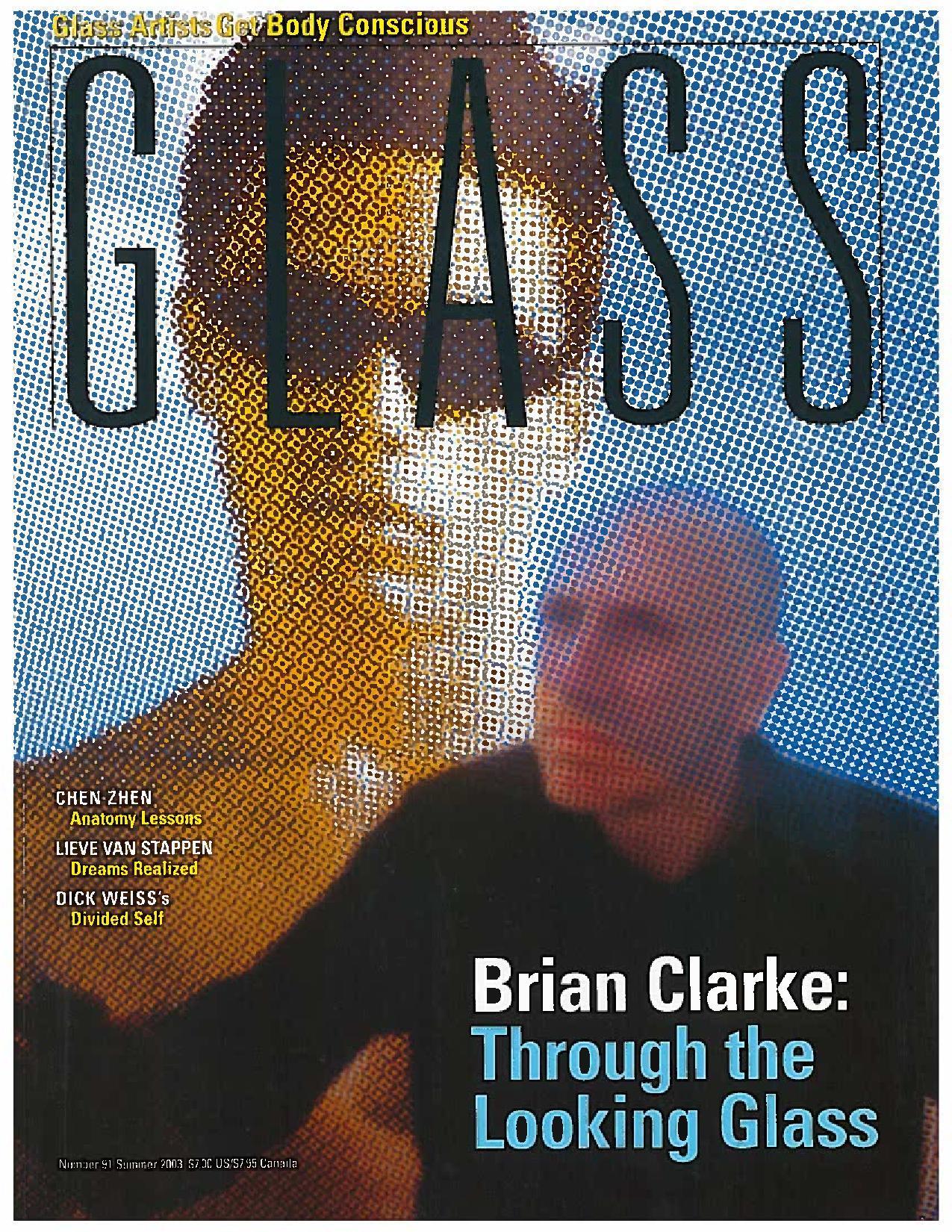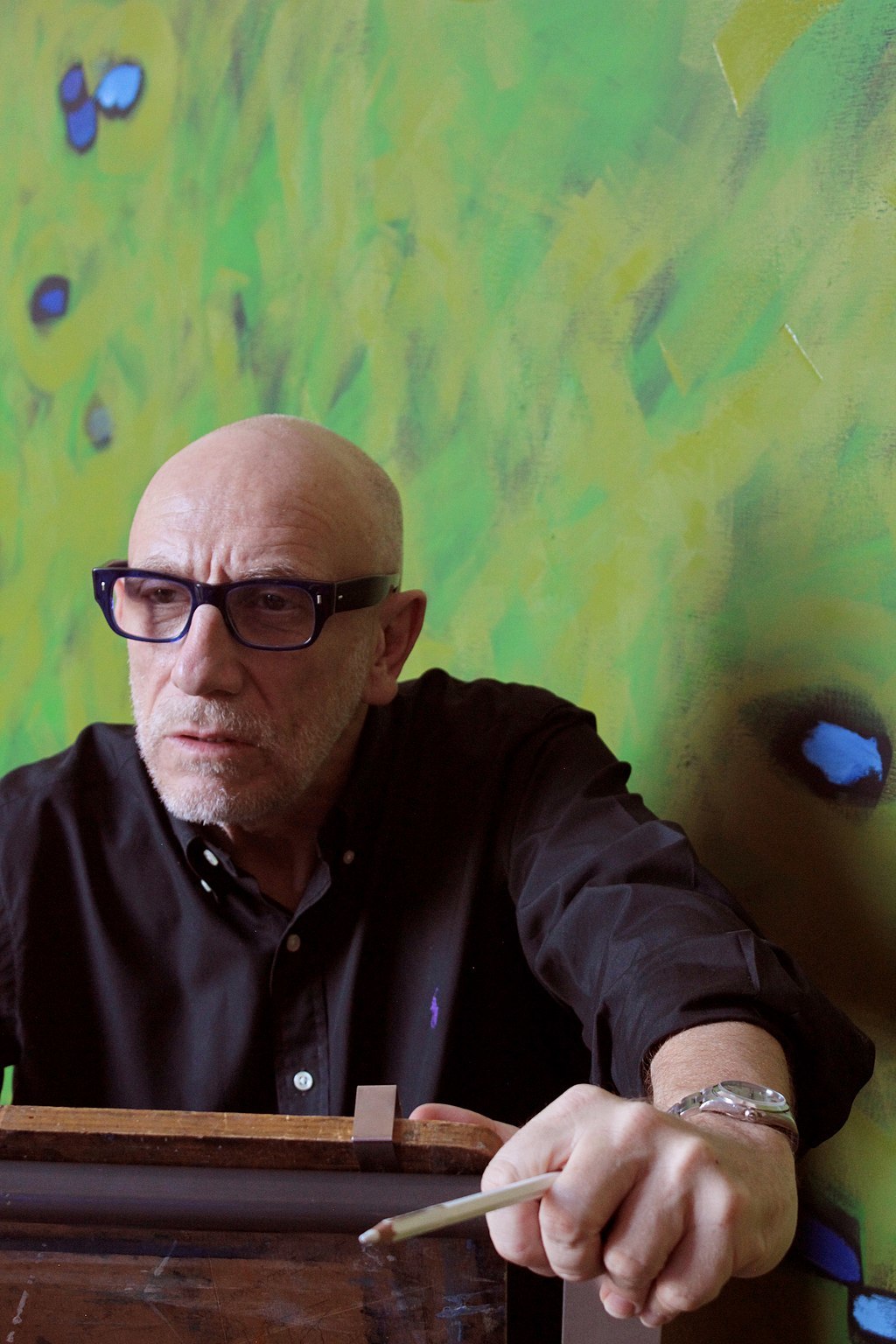Sir Brian Clarke, the fearless stained-glass artist who was always looking for new ways to incorporate emerging technology in his ground-breaking work, passed away July 1, 2025. Born on July 2nd 1953, in Oldham Lancashire England, Clarke showed his talent for stained-glass early, completing his first major commission of 20 windows for the Church of St. Lawrence in Longridge, at the tender age of 22. He also developed a colorful public profile in the London art and fashion scene, once described by The Daily Telegraph as "the rock star of stained-glass" for his frequent appearances in the gossip pages of newspapers.
While his escapades might have made for tabloid fodder, his portfolio of installed stained-glass projects expanded quickly, and his vividly colored dynamic compositions would feature prominently in the Olympus European Headquarters, King Khaled International Airport Mosque, and the London Stansted Airport, and more, all before the start of the 1990s. Museums took note, and in 1986, Clarke had a major solo exhibition at Seibu Museum of Art in Tokyo. In 1989 and in 1993, Clarke would collaborate with singer Paul McCartney, creating stage designs for The Paul McCartney World Tour and the The Paul McCartney New World Tour. Other notable exhibitions of Clarke's were Brian Clarke: Don’t Forget the Lamb, a ground-breaking lead-work project in 2008 at Phillips de Pury, New York; a retrospective in 2015 by Robert Fraser titled Brian Clarke: Works 1977–1985 at Pace Gallery at the Royal Academy of Arts, London; and Brian Clarke: On Line, at Arts University Bournemouth in England, in 2020 that explored 50 years of his interdisciplinary work. Overall, Brian Clarke modernized stained glass by transitioning the medium beyond religious settings and into a contemporary staple within architecture. In his later years, Clarke set about pushing stained glass even further by integrating technology into it’s design and creation.
In 2002, Clarke created his exhibition Transillumination, held in Tony Shafrazi Gallery, New York. The exhibition spotlighted the transience of the human form by way of revolutionary technological influence.

Clarke was featured on the cover of the Spring 2003 edition of Glass (#91), when the late American art critic Robert C. Morgan wrote on the artist's unfettered talent for glass art, writing that the artist was "redefining the vital role of the artist in conceiving architectural space.” Morgan went on to write. "Clarke is able to communicate a narrative through space and light, and is thus able to give his installations an indelible presence of beauty through a sublime encounter with the reality of existence.”
U.K.-based stained glass artist Derek Hunt, a longtime friend of Clarke's, wrote on Facebook that the artist "was a monumental figure in the world of modern stained glass and influenced and inspired countless artist to take up stained glass. His vision, exuberance, curiosity and sheer talent will be sorely missed."
Writing in Glass #91, Morgan observed that “Clarke's appreciation of past artistic movements, and his determination to infuse these aesthetic values into new architectural models and technologies, offered a means to transmit values: irony without cynicism, distance without detachment. ... [he] confronts not only his own past but generational change and a persistent longing for Classical beauty."



